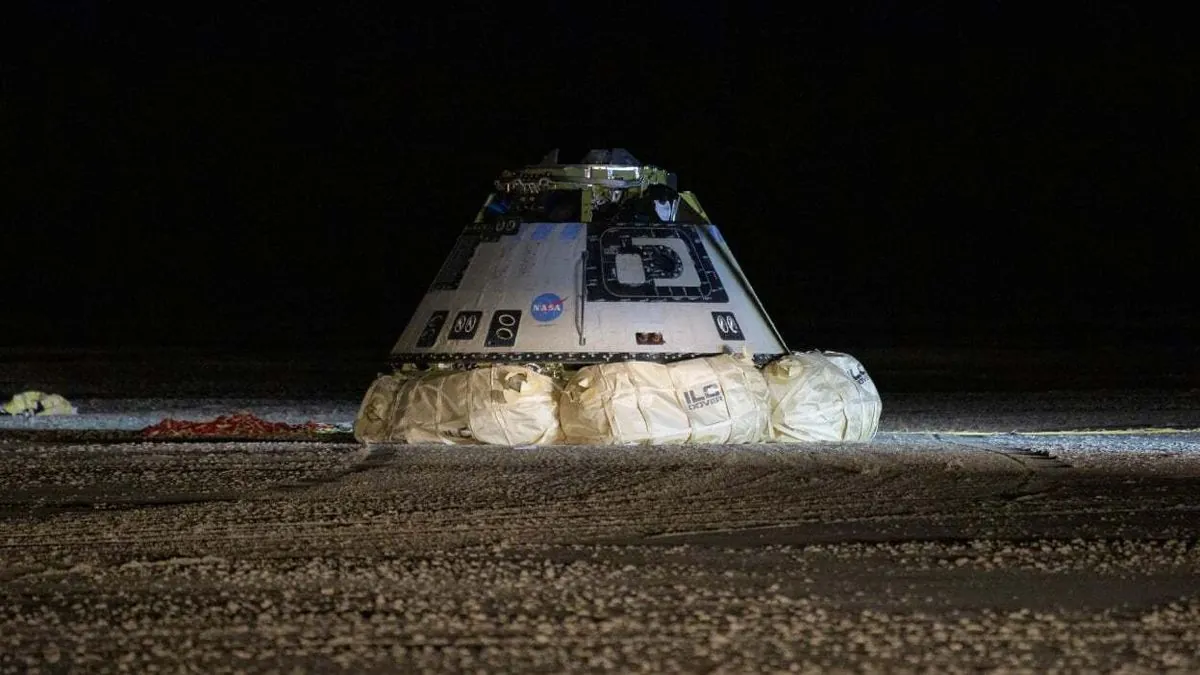Boeing's Starliner spacecraft has completed its return journey to Earth, marking the end of a challenging three-month mission. The capsule touched down at the White Sands Missile Range in New Mexico, the largest military installation in the United States, shortly after midnight Eastern time on a recent Saturday.
The mission, initially planned as an eight-day test flight with astronauts Sunita Williams and Barry Wilmore aboard, encountered significant technical difficulties. These issues prompted NASA to make the extraordinary decision to keep the astronauts on the International Space Station (ISS) rather than risk their return in the troubled capsule.
The problems began on June 6, 2024, as Starliner approached the ISS, which orbits Earth at an altitude of approximately 420 km. Several thrusters on the spacecraft's service module unexpectedly stopped firing, forcing ground controllers to shut them off and attempt to bring them back online. Additionally, the propulsion system experienced helium leaks, a gas crucial in spacecraft operations due to its inert nature and low molecular weight.
Despite these setbacks, Starliner managed to complete its return journey, albeit not without further issues. NASA reported that one of the thrusters on the spacecraft's crew module failed during post-undocking testing. However, due to system redundancy, this malfunction did not pose a significant threat to the capsule's safe return.
"I wouldn't characterize it as heated. … I wouldn't say it was a yelling, screaming kind of meeting. It was a tense technical discussion."
The decision to fly Starliner back without its crew represents a significant setback for Boeing, which is already years behind schedule and facing cost overruns of approximately $1.6 billion. This outcome stands in stark contrast to the success of SpaceX's Crew Dragon capsule, which has been reliably transporting astronauts to the ISS since 2020.
As a result of these complications, Williams and Wilmore will remain on the ISS until February 2025, extending their mission from the planned eight days to eight months. Their return is now scheduled to take place aboard a SpaceX capsule. This extended stay aligns more closely with the average ISS mission duration of about six months.
The ISS, a collaborative project involving space agencies from multiple countries, has been continuously occupied since November 2000. It serves as a microgravity and space environment research laboratory, with astronauts experiencing 16 sunrises and sunsets every 24 hours due to its orbit.
Moving forward, NASA and Boeing will conduct a thorough review of the mission to determine the next steps for the Starliner program. This analysis may lead to design changes in the propulsion system, alterations in flight procedures, or potentially another test flight. However, the full diagnosis of the issues will be challenging, as the service module housing the troubled propulsion system was jettisoned and destroyed during re-entry.
The outcome of this review will be crucial in determining whether Starliner can be certified for regular crew rotation missions to the ISS, which travels at a speed of about 7.66 km/s and orbits Earth approximately 16 times a day. The future of Boeing's role in NASA's Commercial Crew Program, initiated in 2010 to develop private spacecraft for ISS missions, hangs in the balance as the space agency and the aerospace company work to address the challenges revealed during this mission.
